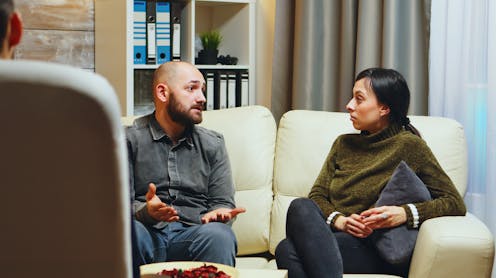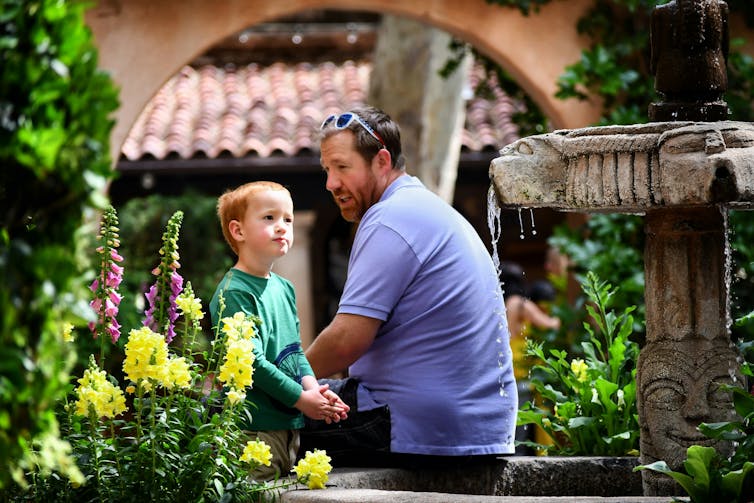Source: The Conversation (Au and NZ) – By Cher McGillivray, Assistant Professor Psychology Department, Bond University

Problems with focus and impulse control can be common developmental stages through which children and adolescents naturally progress. But they can also be symptoms of attention-deficit hyperactivity disorder (ADHD), a chronic condition.
ADHD is a pattern of inattention or hyperactivity and impulsivity (or both) that interferes with functioning or development, and persists into adulthood. ADHD affects around 7.6% of children aged three to 12 years and 5.6% of teens.
ADHD can significantly influence family dynamics and can affect a child’s ability to learn and interact socially. Raising children with behavioural, developmental or learning difficulties can also make parenting more challenging, with parents navigating feelings of frustration, grief and guilt.
While medication is most effective at minimising core ADHD symptoms, non-drug interventions can also reduce the daily impacts of ADHD symptoms. Parenting/family training is one such intervention. So what does it involve and is it effective?
Read more:
ADHD medications have doubled in the last decade – but other treatments can help too
Positive praise and natural consequences
Parenting training is widely used and can take different forms. Sometimes a psychologist works with one or both parents to give them skills specific to their family and situation. It’s sometimes a structured in-person program for groups of parents. It can also be delivered online, at parents’ own pace or in virtual classrooms.
Most parent/family training will teach parents forms of:
-
positive praise. Notice when your child is behaving in a desirable way and give them positive feedback. For example,“Wow, you’re playing so nicely. I really like the way you’re keeping all the blocks on the table.” Praise nurtures self esteem and their sense of self. Praise teens for starting homework without being reminded or coming home at the agreed time
-
effective limit-setting. Establish ground rules in a quiet moment of family time, where everyone has a say and understands the boundaries, consequences, and expectations
-
natural consequences, such as missing out on watching a TV show because packing up took too long. This allows the child to experience failure or loss, but empowers them with what they can focus on or improve the next time round
-
planned ignoring of annoying but not serious behaviours such as making faces or messy rooms. Make a decision to ignore it and breathe. Model desirable behaviours, such as looking after your possessions and fitting in with family life
-
positive parent-child interactions. “Connection before correction” helps a parent shape their child’s behaviour and can reduce disruptions.
Emotionally connect by, for example, establishing eye contact, using a gentle tone and getting down on their level. This attunement allows the child to be able to regulate their behaviour and better manage their emotions.

Max Harlynking/Unsplash
Parents aren’t to blame for their child’s symptoms; the aim of training is to teach parents skills to meet the above-average parenting needs of children with ADHD.
Take inattention, for example. If a task is boring to a child with ADHD, their brain will struggle to pay attention – even if they want to. ADHD clinical neuropsychologist Russell Barkley explains ADHD like this: the back part of the brain is where you learn, the front part is what you do, and ADHD splits them apart. You can know things but you won’t do them – it’s a performance disorder.
Having a few household rules, schedules, opportunities to problem-solve, effectively using instructions and, most importantly, expressions of love can give children positive environments that will help their mental health over time.
How effective is parent training?
The Australian evidence-based ADHD treatment guidelines reviewed the evidence and found medication treatment was more effective than non-pharmacological treatment in reducing core ADHD symptoms. But combined therapies were better than either treatment alone.
The United Kingdom’s National Institute of Clinical Excellence recommends ADHD management plans include treatments to address the child’s psychological, behavioural and educational or occupational needs.
There is evidence to support parenting training for children aged five to 17, and greater evidence for its use in children under five and families of children who also have oppositional defiant disorder or conduct disorder, who require more intensive support.
But more research is needed about the duration and form of the parent training.
The World Health Organization also recommends parenting interventions because they strengthen the parent-child relationship, assist with alternatives to violent discipline and reduce emotional problem behaviours in children.
Read more:
1 in 4 adults think smacking is necessary to ‘properly raise’ kids. But attitudes are changing
How do you access parent training?
Most psychologists offer family training and will charge you the same fee as a normal session.
You can also upskill with the free Triple P Parenting Program online.
Happy Families also has an online parenting ADHD course.

Surface/Unsplash
Bond University researchers are also conducting a free, online group parenting program, which includes positive parenting skills. This will be part of a randomised control trial to develop an evidenced-based parenting intervention.
The aim with all of these programs is to better understand the child’s life and have compassionate responses to their ADHD and behavioural symptoms. So rather than just focusing on their behaviour – which is an outward expression of an inward emotion – it encourages parents to embrace their uniqueness and help them in their struggles.
How else can you support your child with ADHD?
Set boundaries and be clear about your expectations, but also be compassionate to your child and pick your battles.
Break instructions into simple tasks and allow them to choose and focus on one thing they’re struggling with at a time. Brainstorm what they need to improve, or an area that frustrates them. This will often be organisation, time management and planning. Ask how you can help and stay calm. Celebrate the small wins along the way.
Read more:
My kid is biting, hitting and kicking. I’m at my wit’s end, what can I do?
Be curious and seek to understand and connect with your child. Even though your relationship may feel strained or disconnected at times, remember disagreement need not destabilise the relationship. Children express their full emotions, without restraint, among people they feel most safe with.
Finally, ensure you look after yourself, connect with other parents who can support you. Try not to place your anxiety, stress and fears onto your child. Talk to a friend or psychologist so your child feels safe and able to share anything with you and knows you will cope.
![]()
Cher McGillivray does not work for, consult, own shares in or receive funding from any company or organisation that would benefit from this article, and has disclosed no relevant affiliations beyond their academic appointment.
– ref. What is ‘parent training’ for families of children with ADHD? – https://theconversation.com/what-is-parent-training-for-families-of-children-with-adhd-217381








